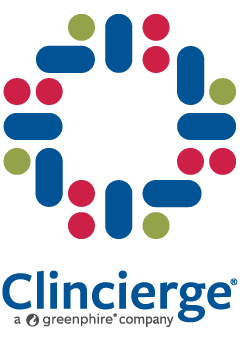The onset of COVID-19 brought about many changes in how patients connected with healthcare providers and clinical trial sites. Seemingly overnight, physicians had to pivot to accommodate patients who needed to continue their treatment regimen while observing social distancing. The usage of telemedicine skyrocketed, with patients contacting their providers and site staff via telephone and video conferencing platforms.
While these new communication options offered patients a heightened level of continuity of Covid-conscious care, a recent study by the University of California found they also created new challenges.
Key Insights:
1. Language barriers prevented productive communication between patients and their healthcare providers and clinical site staff.
Most hospitals and clinical trial settings have on-site interpreters to help patients understand their health condition and planned course of treatment. When contacted by telephone or video call by an English-speaking healthcare provider, non-English speaking patients and their caregivers could not understand the medical information shared with them.
Some facilities attempted to alleviate this issue by using a designated interpreter telephone line to reach a patient. However, this plan often backfired, as the number would show as an 800#, and most patients refused to answer the call. When time is of the essence in treatment, the inability to connect to the patient exacerbates the already challenging healthcare action plans.
2. Some patient groups disliked or did not comprehend certain forms of telehealth communication.
Understanding the preferences of various generations of patients and their caregivers is essential. Senior patients often stated they disliked video calls and preferred healthcare staff to contact them by telephone.
Some older patients had poor eyesight or other coexisting medical conditions, making video calls very difficult. Others did not have internet access or were unaware of how to use the various video conferencing platforms. It is estimated that up to 25% of Medicare patients over the age of 75 do not currently have internet access.
3. In-person consultations are often much more productive than telephone or video calls.
Most obviously, blood tests and imaging scans must be done in person, requiring a patient and caregiver to visit a hospital or clinical trial site. Many other methods of medical monitoring are most effective when a provider sees the patient in person, rather than as described by a patient on a telephone call or shown over a video call.
Telehealth Solutions Provided by Clincierge
Due to the emergence of COVID-19, healthcare providers and clinical trial site staff had to quickly devise new ways to see patients and continue their much-needed care. While innovative ideas sprang up, unforeseen challenges rapidly arose throughout implementation and use. Moving forward, our industry should use the new knowledge gained to continue to combat the challenges associated with telehealth.
More than seven years ago, we created our unique Clincierge Coordinator model. This innovative 1:1 design pairs a coordinator with a patient and their caregiver. This lasting model has stood the test of time, alleviating many telehealth issues noted above. It is unique to our company and highly conducive to positive communication and medical data collection.
100% of trial participants said it was important to have a dedicated person to help them manage trial logistics.
Clincierge is dedicated to understanding patient preferences and the burdens of participating in clinical trials. View the results of our recent study to explore how effective patient support strategies can reduce barriers, increase retention, and improve outcomes in rare disease clinical trials in our latest eBook.
When patients opt into our services, they pair with a Clincierge Coordinator who will remain beside them for the entirety of the clinical trial.
Their Clincierge Coordinator:
- Speaks the patient’s native language and English – some speak up to 4 languages!
- Is local to the patient – in the same time zone
- Knows the local and cultural nuances of the patient’s country, as well as the destination country
- Learns the patient’s and their caregiver’s communication preferences – call, text, or email
- Shares their cell phone number so the patient and their caregiver can reach out directly when needed
- Works to personalize travel plans and accommodations based on the patient’s preference
- Assists patients in rural areas or with limited resources who may not have access to the internet
In summary, the Clincierge Coordinator model anticipated the patient’s needs even before telehealth methods increased due to COVID-19. Our coordinators are educated, empowered resources and advocates for patients and their caregivers and often become friends offering several types of support. They are with the patient from opt-in of services through trial completion, alleviating many trial participation barriers for the patient and their caregiver. Patients enrolled in our services complete their trials more than 95% of the time, offering hope for them and the generations beyond.
Contact us today to learn how Clincierge can provide customized support solutions for your clinical trial.
Learn more about improving your clinical trials.


